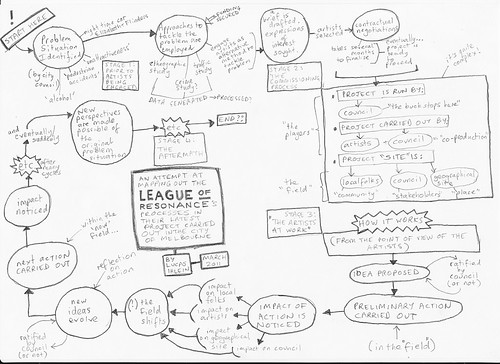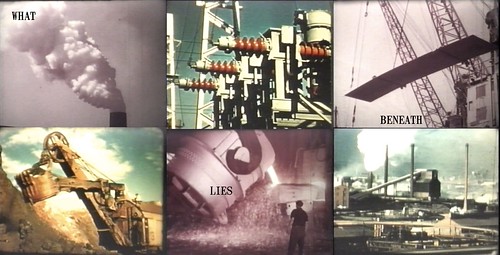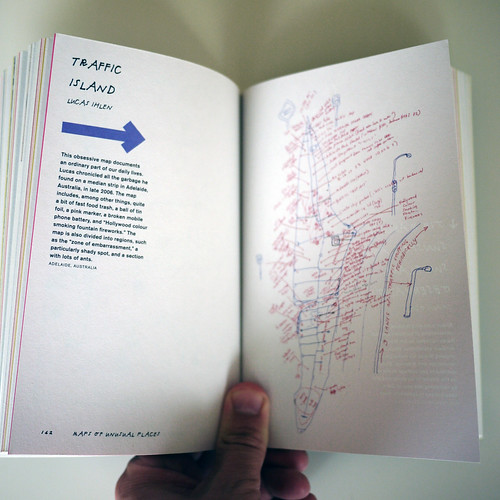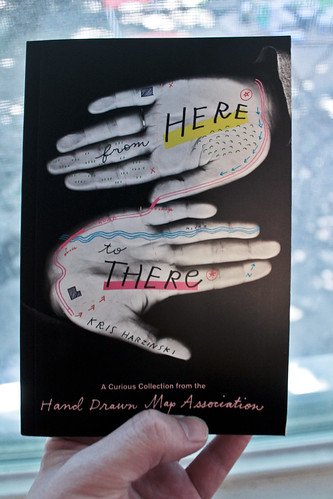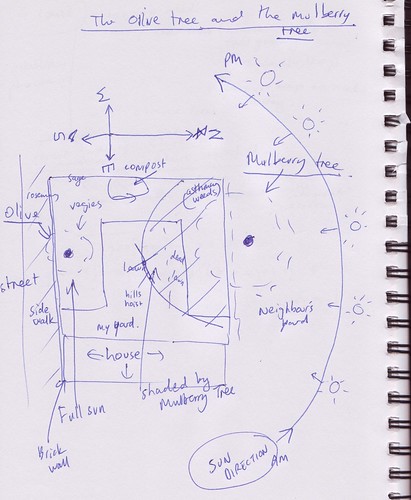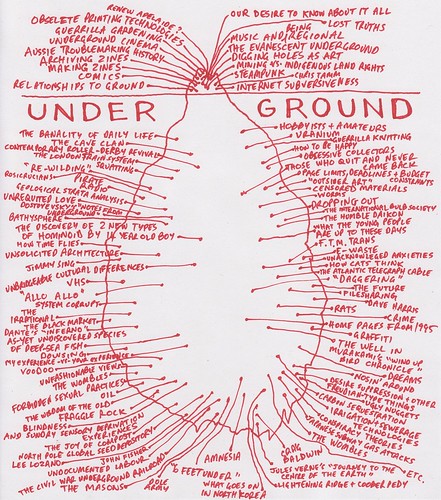
[The Underground radish – click to see it bigger…]
I guest-edited an edition of Artlink Magazine. You can read more about it here (including a few of the essays which are available there online.
The issue features great essays and artwork, interviews and comics, by and about Ian Milliss, Chris Fleming, Vanessa Berry, Leigh Rigozzi, Pat Grant, Rick Smith, Alison Bechdel, Margie Borschke, Ianto Ware, Geert Lovinck, Shane McGrath, Breakdown Press + Ian McIntyre, Glenn Barkley, Jessie Lymn, Danni Zuvela, Teri Hoskin, Ali Russell, Tony Birch, Caren Florance, Peter Drew, Melinda Rackham, Kirsten Bradley, Eve Vincent, and Donald Brook.
The issue will have a launch celebration on Sunday 4 July, 2010, at Bill and George in Redfern, Sydney.
Free, all welcome! Magazine available at a discount price!
3pm, Bill and George, 10-16 William St, Redfern, Sydney.
At the same time, Bill and George will also be launching their LIBRARIUM project, “a slow-growth free-range artisan’s library of small press publications etc”.
All the details about the launch are here and here.
PLUS! Hot off the Big Fag Press, I’ll be launching a limited edition print of the above image, which is used as the cover to this edition of Artlink.
Get ’em while they’re hot!
PLUS!! News just in:
This edition of Artlink will be launched by septuagenarian Newtown artist David Urqhuart !
David Urquhart was born in Kings Cross, Sydney, grew up in Homebush with the smells of the cattle yards a daily delight. He went to school, but was not educated, at Catholic schools.
David began his respectable working life in the rag trade, including selling bras and girdles for The Jenyns Patent Corset Company.
As was fashionable in 1968 he turned his back on his wicked capitalist ways and ‘dropped out’ and joined the marginal people.
As a graduate of Sydney College of the Arts, David imagines himself to be an artist.
David will ruminate briefly about the multiplicity of “undergrounds” he’s experienced over the years, before raising a glass to toast this new edition of Artlink Magazine !
– – –
[Here you can see a photo of David fighting homophobia, with the help of the Roads and Traffic Authority. ]
